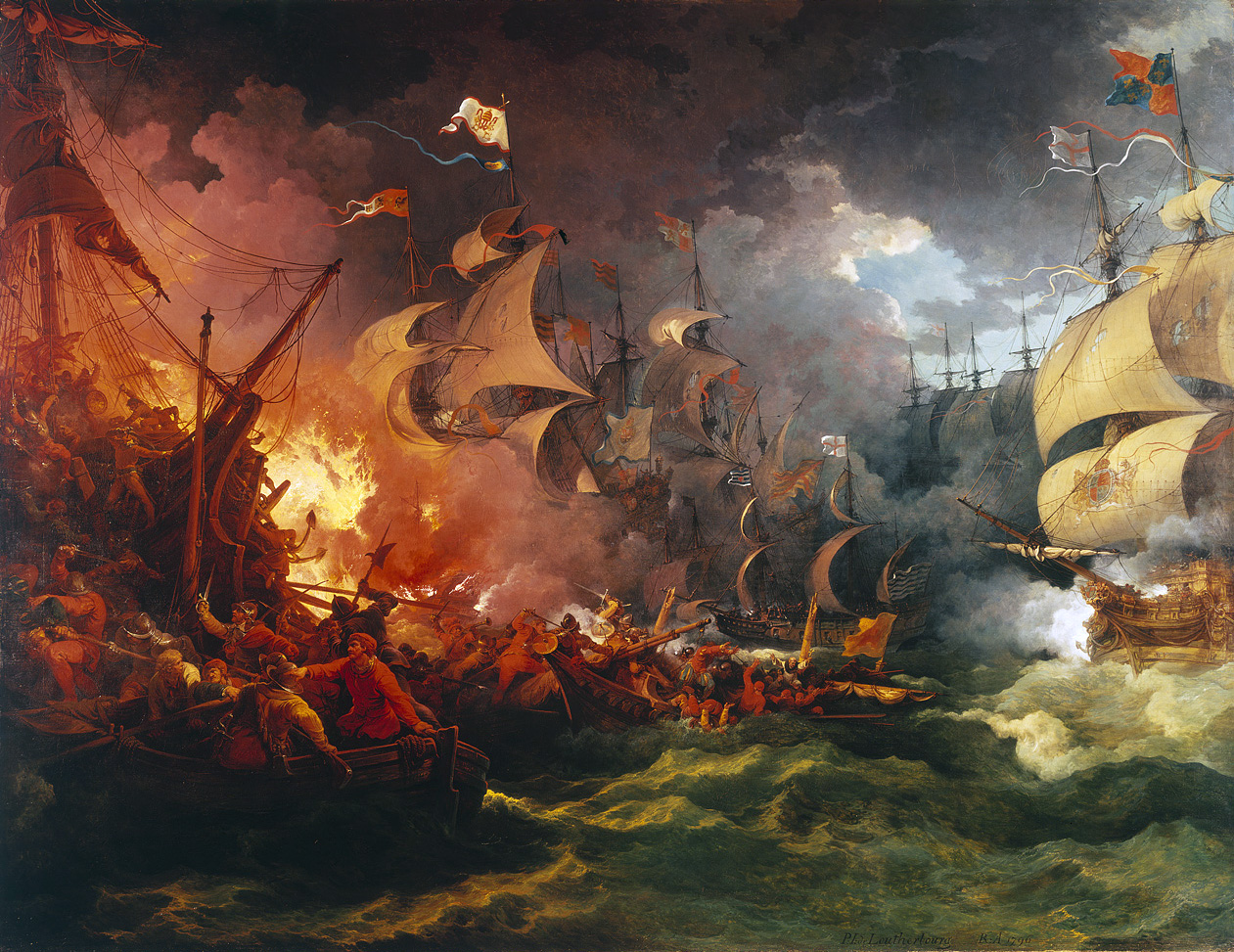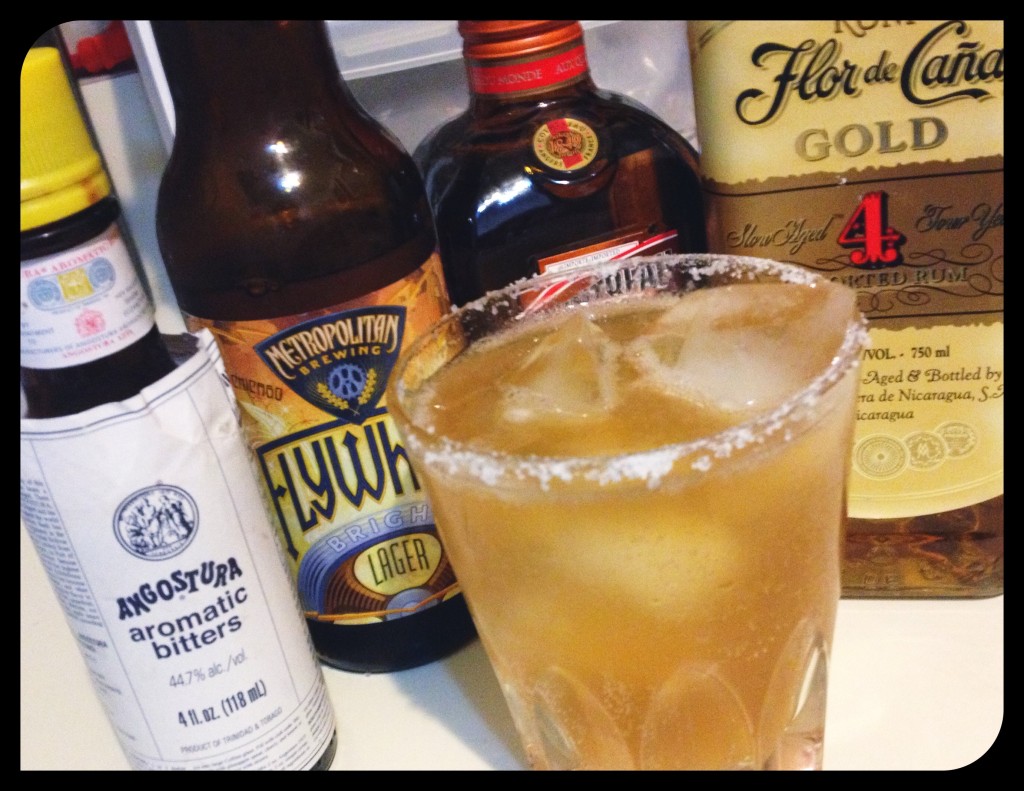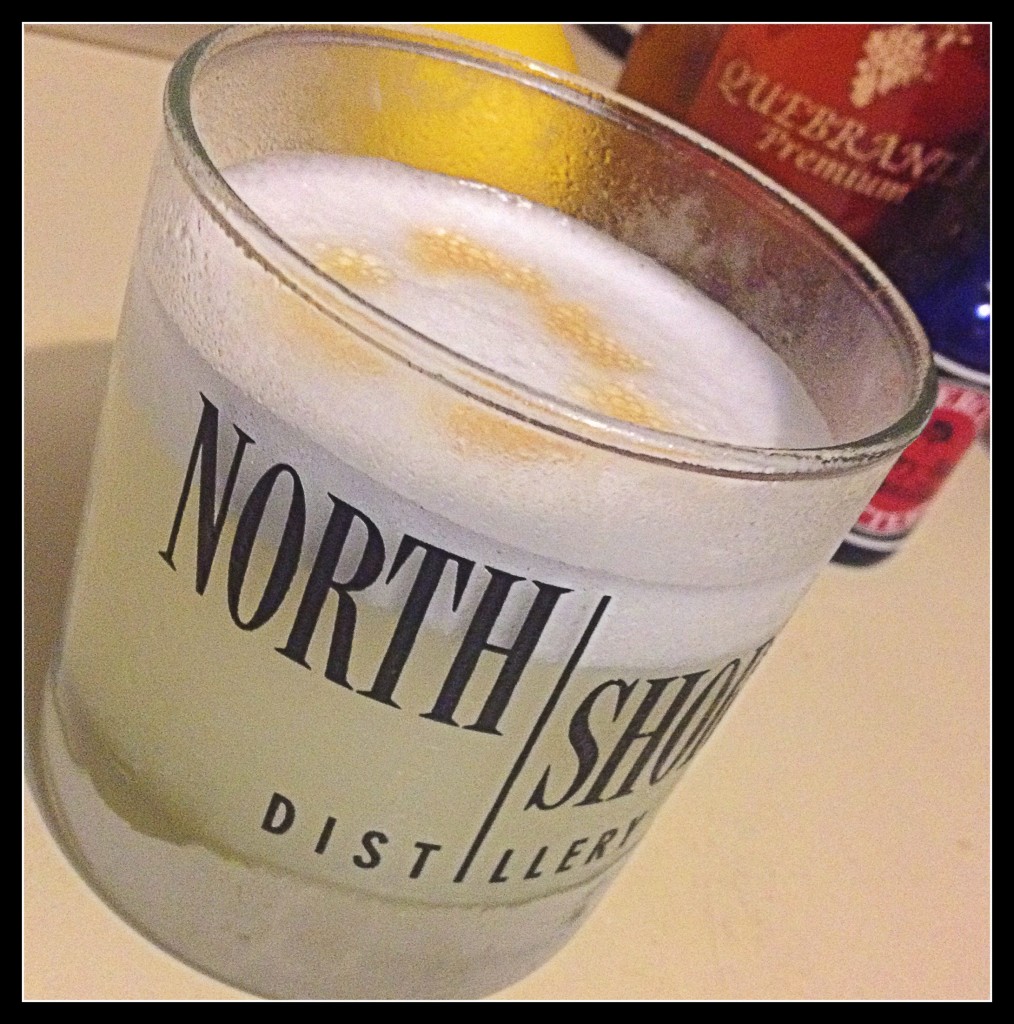One of the reasons I enjoy international competitions like World Cup is the opportunity to lace both humor & drink-mixing with history:
This is Spain's worst defeat since 1588.
— God (@TheTweetOfGod) June 13, 2014
He’s referencing the defeat at the Spanish Armada at the hands of English (and Dutch) naval forces. Naturally. This little tete-a-tete was a part of the broad, bloody epic of the Eighty Years’ War, a continent-spanning conflict that was ostensibly about Protestant Netherlands revolting against Catholic Spain.

If you look closely, you’ll see a Van Persie launching cannonballs with his head.
What better way to celebrate the Netherlands dispensing a revenge-fueled soccer beatdown against highly-favored Spain than with a cocktail? If we’re going to build a drink that pays homage to these two belligerents, it’s only fitting that we build it around their nationalistic alcohols: genever and sherry.
Genever: This is the grandpappy of gin, a malty spirit infused with juniper. The Eighty Years’ War popularized this “Dutch courage” with their English allies (who would eventually refine it into what we recognize as the ‘London dry’ style of gin). The thing to remember about mixing & drinking genever is that it is not gin — it works a lot more like an herbal cousin of whiskey.
Sherry: This is a fortified wine made in southern Spain. The Eighty Years’ War popularized this Spanish tipple with their English enemies after… Huh. That sounds familiar. If you’ve never sipped or mixed with fortified wine, I am sorry for your wasted years. Just know that its a much more high-octane wine due to it being fortified with liquor (usually brandy or a neutral spirit). Some food is fortified with vitamins. This booze is fortified with more booze.
Enough history. To the drink!
Eighty Years’ War
2 oz – genever
1 oz – Cocchi Americano (or Lillet Blanc)
¼ oz – dry sherry
dash of angostura orange bitters
Combine ingredients in a pint glass. Add ice, stir until it’s cold, and strain into a chilled cocktail glass. Garnish with a swath of flamed orange peel.
This drink is not for the weak of liver. Calling it booze-forward is like saying the Pope is Catholic: you’re drinking liquor + fortified wine + a different fortified wine + bitters. It’s a tweaked version of this aromatic martini and this spicy genever drink, with a bounty of floral, herbaceous, and (William of) orange flavor. This is a brash but balanced drink, perfect to celebrate the two national teams that inspired it.
While we’re on this history kick, let’s follow the English navy away from Europe all the way down to Van Diemen’s Land. What trip down under would be complete without beer or rum? I’ll do you one better: what if we combined that beer and rum into a single drink? Yeah! Then we drink a ton of them while cheering way too loudly for Tim Cahill in the deluded hope that Australia might pull an upset! Oi Oi Oi!
A Grog’s Chance in Hell
1½ oz – dark rum
½ oz – Créole Shrubb (or other 80-proof orange liqueur)
½ oz – fresh lime juice
dash of orange bitters
witbier (or a light lager)
Combine the first four ingredients in a highball glass. Fill with ice, and give it a brief stir. Top with the beer, and garnish with an orange slice.
Sure, if I wanted to make this a proper Socceroo drink, I might specify using Bundaberg rum and Australian lager. But I’m more interested in creating a hybrid between this lager-topped recipe and a more traditional spiced grog made with hot water instead of light beer. The spices in the witbier, Creole Shrubb, and bitters hint towards the latter, but with beer as called for in the former.
Sailing to the other side of the southern hemisphere, we arrive at Chile. Sure, the aggressive soccer play of La Roja may excite football fans, but I’m excited about the cocktail associated with the country: the Pisco Sour. Pisco is a South American style of brandy that Peru & Chile have been making for centuries, and it provide a beautiful & aromatic alternative to North American and French styles.
Pisco Sour
3 oz – pisco
1 oz – fresh lemon juice
¾ oz – simple syrup
1 egg white
couple dashes of cherry bark vanilla bitters (or Angostura)
Combine all ingredients except the bitters in a shaker. Shake vigorously WITHOUT ice, then add ice and shake again. Strain into a chilled rocks glass, and garnish the foam atop the drink with a swirl of bitters.
I know some of you are about to revolt at the sight of a cocktail calling for a raw egg. You can use pasteurized pre-packaged egg whites, if you really have to, I guess. Whatever you use — and I highly recommend the egg — you definitely want to dry shake before you shake with ice. It will ensure that you emulsify the ingredients by the time they get to your glass. You want that, because a properly-made Pisco Sour is silky and heavenly, and goes down sumptuously without a second thought. There’s a slight nuttiness from the bitters sitting on the foam that leads into the luscious and light body of the pisco, balanced out with the tartness of lemon tempered by sugar.
We will be visiting the Pisco Sour again, as a variation on this base. But savor the classic for now.
Check back for Group C, which’ll be chock-full of bitters, Les Éléphants, and Japanese whisky.









